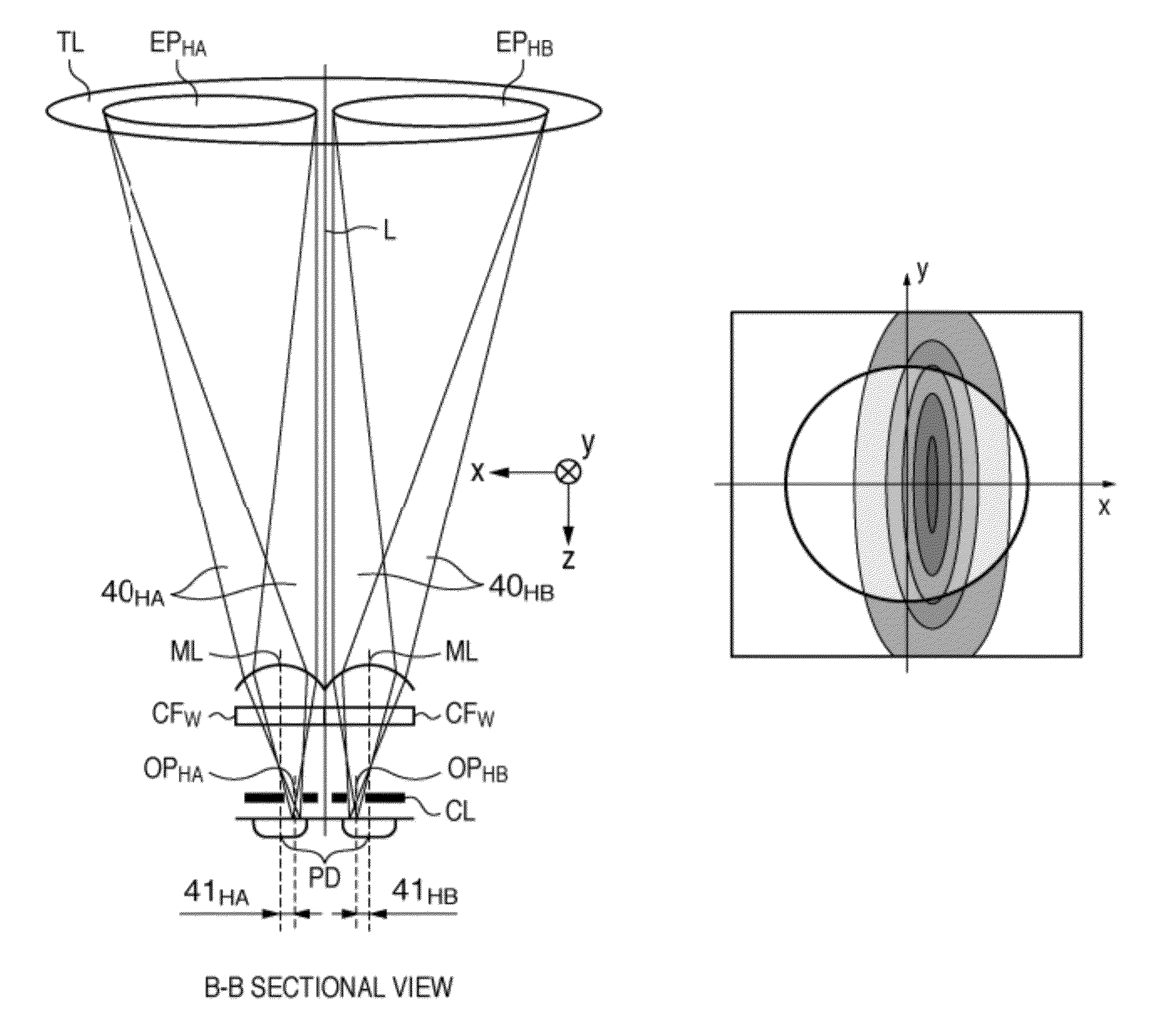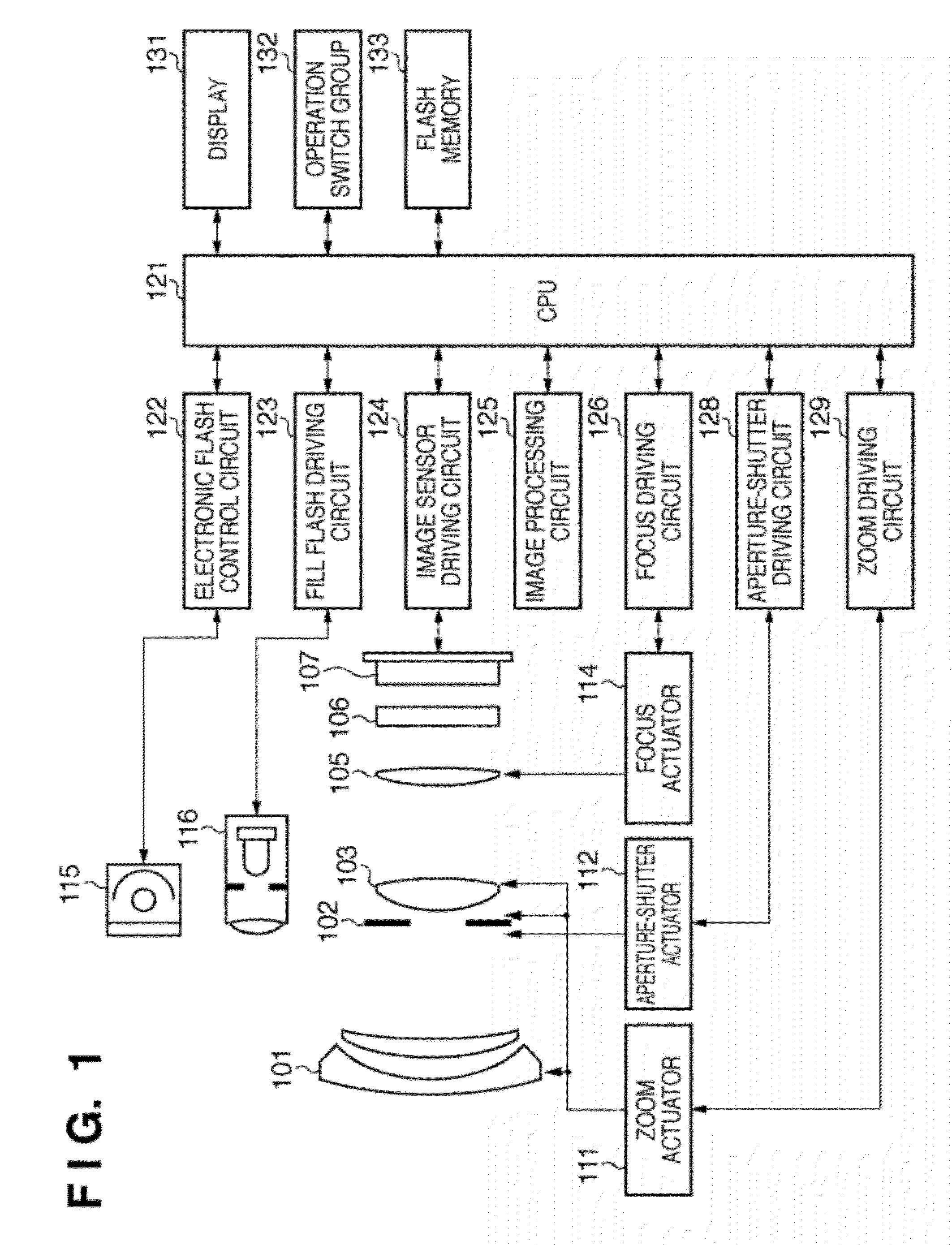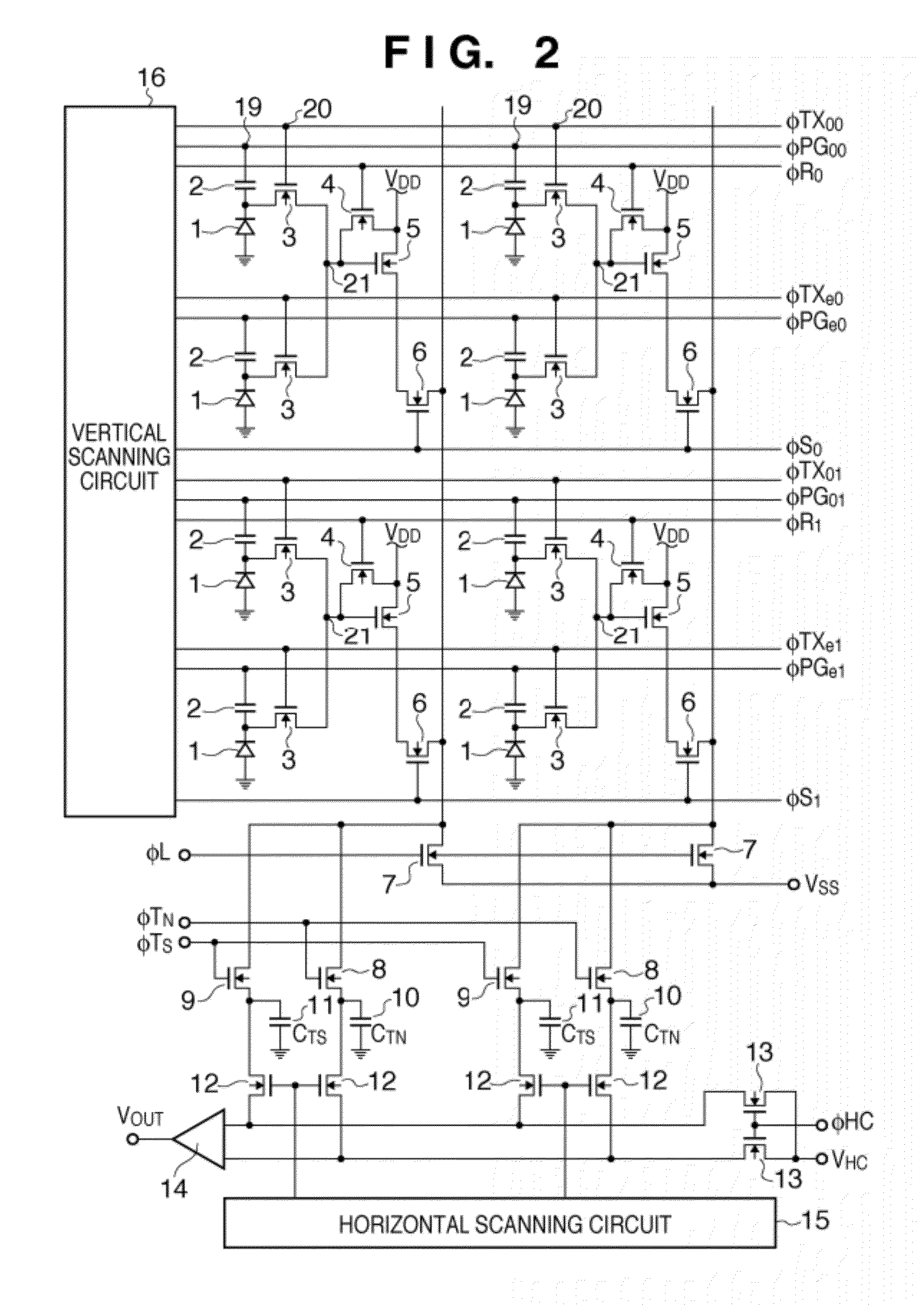Focus detection apparatus, focus detection method, and image sensing apparatus
a focus detection and focus detection technology, applied in the direction of instruments, printers, camera focusing arrangement, etc., can solve the problems of difficult to maintain the agreement of photosensitivity characteristics, difficult to calculate the focusing accuracy of the image generated, and the difficulty of each light-receiving area of the photoelectric converter to achieve the effect of improving the focusing accuracy and simple calculations
- Summary
- Abstract
- Description
- Claims
- Application Information
AI Technical Summary
Benefits of technology
Problems solved by technology
Method used
Image
Examples
first embodiment
[0061]FIG. 1 is a block diagram of an image sensing apparatus according to a first embodiment of the present invention, showing an electronic camera made up of a camera body containing an image sensor, and a photographic optical system integral with the camera body. In FIG. 1, reference numeral 101 denotes a first lens group placed at the distal end of the photographic optical system (imaging optical system), being held in such a way as to be able to move forward and backward along an optical axis. Reference numeral 102 denotes an aperture-shutter which has capabilities to adjust an amount of light during shooting through adjustment of an aperture diameter and adjust exposure time (in fractions of a second) during still image shooting. Reference numeral 103 denotes a second lens group. The aperture-shutter 102 and second lens group 103 move forward and backward integrally along an optical axis, and performs a scaling operation (zoom function) in conjunction with forward and backward...
second embodiment
[0194]Next, a second embodiment of the present invention will be described.
[0195]A configuration of the image sensing apparatus according to the second embodiment is the same as the first embodiment, and thus description thereof will be omitted herein. Operation of the second embodiment will be described assuming that the aperture value of the lens (f-number) is set to 4. Pupil intensity distributions of the focus detection pixels are also similar to those of the first embodiment shown in FIGS. 14A and 14B.
[0196]FIGS. 38A and 38B are diagrams each showing vignetting, at a predetermined aperture value (f-number) of 4, on the pupil surface Me of a focus detection pixel at the center image height Img0 of the image sensor 107, where FIG. 38A shows characteristics of the pixel SHA and FIG. 38B shows characteristics of the pixel SHB. In this case, shape of pupil vignetting corresponds to aperture size at f4, where the luminous flux passing through the shape represented by Area1 in FIG. 13...
PUM
 Login to View More
Login to View More Abstract
Description
Claims
Application Information
 Login to View More
Login to View More - R&D
- Intellectual Property
- Life Sciences
- Materials
- Tech Scout
- Unparalleled Data Quality
- Higher Quality Content
- 60% Fewer Hallucinations
Browse by: Latest US Patents, China's latest patents, Technical Efficacy Thesaurus, Application Domain, Technology Topic, Popular Technical Reports.
© 2025 PatSnap. All rights reserved.Legal|Privacy policy|Modern Slavery Act Transparency Statement|Sitemap|About US| Contact US: help@patsnap.com



